#bracket g
Explore tagged Tumblr posts
Text


611 notes
·
View notes
Text
Battle of the Gingers Bracket G Round 5 (Finals)

Missile (Ghost Trick) vs Nami (One Piece)
#battle of the gingers#botg bracket g#battle of the gingers round 5#missile ghost trick#ghost trick#nami one piece#cat burglar nami#one piece#tournament poll
176 notes
·
View notes
Note
Hello, Spamton!
How's life? Also, do you have any opinions on the Addisons? (Pink, blue, orange, and yellow)
If so, what do you think of them?

#raaughhh ruhhh i am immediately going tyo bed ive been working on it. almost all day so if you see mistakes NO YOU DONT#[you've got mail!]#spamton#spamton g spamton#deltarune#deltarune spamton#deltarune chapter 2#still frame asks on regular in exchange for animated ones is a pretty good deal i think#rruuhahahah#Now this is the point where id say why you pissed him off but id be lying becaus he isnt#And i like the asks about the addisons despite people forgetting that they are indeed a topic lol#i would just say that askihin him on HIS opinions on them will get you a slew of censored brackets and a largely irritated guy#Im sure eventually youll figure out a good question that will get him talking in a way you want but for now its either : youre flatout#ignored or insulted..... or he only answers whatever else you put in there. which counts as being ignored. mu ha ha#at least for the “your opinion” ones but i do like this ask#as per usual the tag paragraph#eat well my disgusting bug horde im going to bed even though i had other plans
172 notes
·
View notes
Text


Spamton propaganda
Miss Piggy propaganda
#puppet bracket#puppet poll#spamton g spamton#deltarune spamton#deltarune#the muppets miss piggy#miss piggy#the muppets#original poll
604 notes
·
View notes
Text
So, given everything that's happened in recent hours, I thought I might give people who don't know about Gundam some stuff to learn about. Hopefully I can give a balanced and not-racist take like some people.

What is Gundam?
Created by Yoshiyuki Tomino with help by Yoshikazu Yasuhiko and animated by the studio Sunrise (currently Bandai Namco Animation, though I refuse to call them that), the original Mobile Suit Gundam released in 1979 to initially-limited success, though would gain popularity through a combination of fujoshis shipping the characters, the sale of plastic model kits referred to as "Gunpla" and a recut of the series into three compilation movies throughout the early 80's. And as of 2024 is the 66th highest-grossing media franchise of all time, beating out Scooby Doo, Minecraft and the Simpsons.
Also, I'm pretty sure it's what sparked Japanese sci-fi's obsession with O'Neill Cylinders.
The original anime takes place in the year 0079 of the Universal Century, where the Principality of Zeon: a nation composed of orbital space colonies declares a war of independence against the Earth Federation. This "One Year War" has already claimed half the human population by series start and is waged through the use of "Mobile Suits": bipedal mecha powered by a fusion reactor capable of effectively fighting out in the reaches of space.
Main character Amuro Ray is the son of a Federation engineer who lives in an out-of-the-way space colony, though soon finds his home under attack by a Zeon infiltration. After finding the secret Mobile Suit project his father was working on: the RX-78-2 Gundam, he fights off the Zeon invaders, though finds himself and a bunch of other kids conscripted by the Federation to fight the forces of Zeon aboard the ship the White Base. Throughout his journey, Amuro and the Gundam fight many battles against Zeon, including against their mysterious masked ace pilot Char Aznable.
The series was responsible for the codification (but not creation, people get this wrong all the time) of the "Real Robot" subgenre of mecha, where the robots were relatively more realistic and used as weapons of war as opposed to the more fantastical "Super Robot" subgenre pioneered by Mazinger Z and Getter Robo.
A major theme of the show, and the franchise as a whole is "War is bad", as demonstrated through this meme:
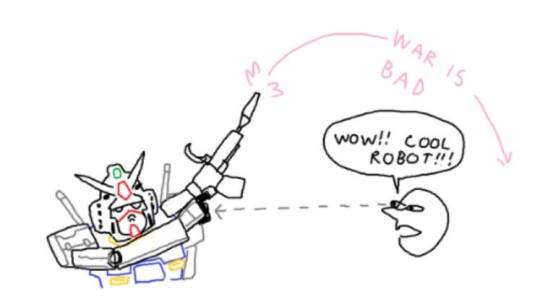
Yes, this is the original version of this meme format.
Anyway, Tomino, a renowned pacifist who grew up in the shadow of Japan's involvement in WW2 tried to use his platform as an anime director to try and tell a story that would get people to realise war's futility and brutality.
So I hear you asking, "That's nice and all, but what about the space lesbians who beat Destiel on their home turf?" Well, let's get into that.
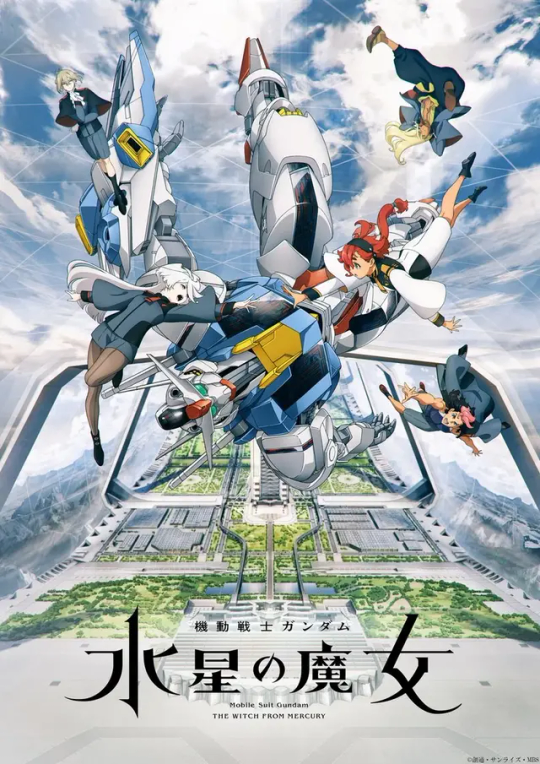
What is the Witch From Mercury?
Mobile Suit Gundam: The Witch from Mercury, or "G-Witch" for short is one of the more recent entries in the Gundam Franchise and a (very) loose adaptation of William Shakespeare's The Tempest. Set in the year 122 Ad Stella, the solar system is under the de facto control of the Benerit Group: a megacorporation with borderline-medieval internal politics that maintains a system of capitalism that benefits Spacians at the expense of those who live on Earth.
Main heroine Suletta Mercury enrolls at Asticassia School of Technology owned by the Benrit Group at the behest of her mother: CEO Prospera Mercury of the Mercury-based Shin Sei Development Corporation, and wins a Mobile Suit duel against a bully in her own MS: the Gundam Aerial. This however means she has now won the hand in marriage of daughter of the Benerit Group CEO: Miorine Rembran, beginning a series of consequences that shape the very political landscape of the solar system.
G-Witch was a massive hit, both critically and commercially. The first episode: the Witch and the Bride attracting record numbers for the studio and the Gunpla kit for the Aerial is currently the best-selling Gunpla kit ever.
Contrary to popular belief, G-Witch is not the first piece of Gundam media to feature a female protagonist. That honour would go to the 2002 Japan-only manga École du Ciel, nor would it have the first queer main character, which goes to 1999's Turn-A Gundam (and if you were to ask any fan of the series, they'd so it goes back to the very beginning). But it became notable for its lesbian representation in anime (in spite of Sunrise's attempts to downplay it, to the anger of the director, writer, producer, artists, animators, cast, fans and even their own parent company Bandai Namco who forced them to back off).
One thing I need to clarify: You don't need to have watched the original series to enjoy G-Witch. They're not even in the same continuity.
So if you're interested in the series and you've only watched G-Witch, I'll give out three recommendations for you all to enjoy:

Mobile Suit Gundam 00
Gundam 00 takes place in the year 2307 (the only series to use our own calendar), where the world is divided between three global superpowers: The Union of Free & Solar Nations (The Americas, Australia, New Zealand and Japan), the Human Reform League (China, South, East, Southeast and Central Asia) and the Advanced European Union (all of Europe, including all of Russia west of the Urals) who each control a space elevator near the equator and wage proxy-wars in Africa and the Middle-East over Earth's dwindling resources. This eventually culminates in the emergence of Celestial Being: a terrorist group consisting of Setsuna F. Seiei, Lockon Stratos, Allelujah Haptism and Tierria Erde, all of whom use powerful "Gundam" Mobile Suits and try to forcefully impose global peace on the Earth.
00 is pretty slow-paced and is more about the world than the individual characters, but said characters are really well-written, especially the characters from the three power blocs who are the de facto protagonists as they try to stop what are in their eyes a bunch of crazed terrorists preaching a hypocritical and incoherent ideology of "peace through force".
And to address the elephant in the room, this series is VERY post-9/11. Constant talks about terrorism, proxy-conflicts in the global south (especially the Middle-East), religious extremism, dwindling resources and the wars fought over them. While the franchise has always been political and of-its-time, you can just tell 00 was made in the mid-2000's. Again, it's good. But just something to keep in mind.
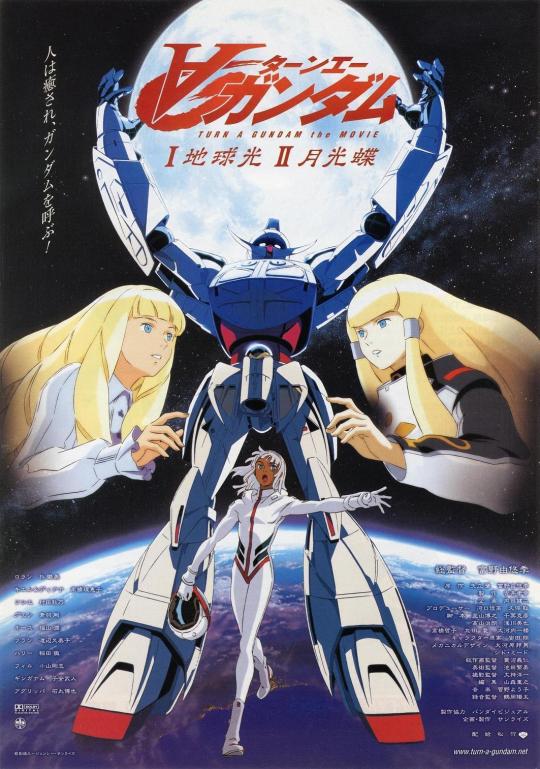
Turn-A Gundam
Turn-A Gundam is one of the weirder elements of the franchise for a myriad of reasons. Not the least of which being its unique setting taking inspiration from the famous sci-fi novel War of the Worlds.
In the Year 2345 of the Correct Century, human civilisation is at a level of technology reminiscent of the late-19th/early 20th centuries, save for the Moonrace on... well, the moon. As part of their queen Diana Soreil's plan to reintegrate both Lunar and Terran societies, several scouts are sent to the planet to set up their return to the planet. One such scout: Loran Cehack integrates into Terran society as a driver for the wealthy Heim family, though at a coming of age ceremony for the family's second daughter, a member of the Moonrace attacks the technologically-inferior Terrans. However, a mysterious mustached statue breaks apart to reveal a "White Doll": the Turn-A Gundam, allowing Loran to fend off the invaders. rest of the series becomes more of a mystery to how the supposedly-peace loving Moonrace could allow of such brutality.
The setting of the Correct Century timeline alone is one of the draws of Turn-A, though its excellent characters and compelling mystery also help a lot.
I do however have two warnings for people interested in watching it. The first is that this series was never dubbed. While it did receive an official sub in 2015, there still isn't a dub for the series. So if that bothers you, there's your warning.
The other is that there's a pretty big twist in the latter part of the series that while I will not spoil it here, it's such a big deal that I can't not mention it. It doesn't make any sense, and it actively detracts from not just the series, but the whole franchise. You'll know it when you see it. It doesn't ruin my enjoyment, but a lot of people don't like Turn-A for that alone.
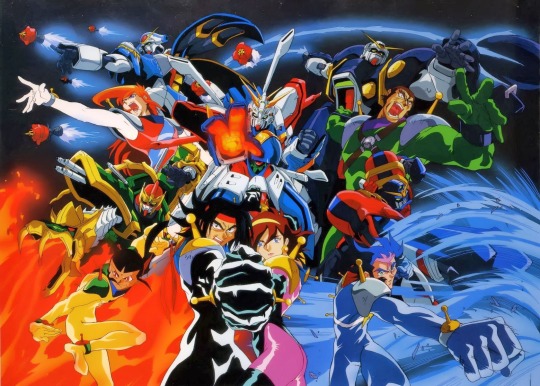
Mobile Fighter G Gundam
Favourite entry. Don't care. It's peak.
In the Year 60 of the Future Century, war has been abandoned by the nations of humanity in favour of the Gundam fight: a quad-annual fighting tournament between Gundams representative of the countries of the world where the winner rules space until the next Gundam fight, all while leaving the Earth ecologically devastated in the fighting. Neo-Japan's Gundam Fighter: Domon Kasshu arrives on Earth seeking information on his older brother Kyoji, who killed their mother and led to their father's arrest before stealing the experimental Devil Gundam to Earth, beating up every Gundam Fighter in his way. However, he eventually learns of far more dangerous revelations about the incident.
G Gundam is to put it bluntly: bat-shit insane. And I love it. It basically took a look at the then-stagnating franchise in the wake of the wet fart that was Victory Gundam and said "I know what can save this franchise, Bruce Lee movies!" And it somehow worked.
Word of advice: watch it dubbed. Mark Gatha absolutely kills it as Domon every time, and puts just the right amount of ham into every line.
So yeah, that's some stuff on Gundam. This was a long post to write out. I'm gonna take a break now.
#gundam#sulemio#g witch#destiel#ao3topshipsbracket#msg#mobile suit gundam#mobile suit gundam the witch from mercury#tumblr top ship bracket#gundam suisei no majo#supernatural#the witch from mercury#witch from mercury#history lesson
282 notes
·
View notes
Text
The F1 driver who takes every opening he sees
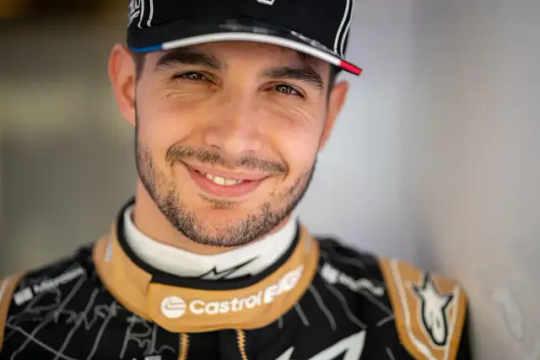
A mechanic’s son, Esteban Ocon took an unlikely path to an F1 driver’s seat. Now he’s fighting to keep it.
MONTE CARLO, Monaco — The mechanic’s son walks past women in bright dresses and men in fine suits, many of them sipping champagne. He breathes in the salty air of the Mediterranean, its shoreline neither rocks nor sand but dozens of mega-yachts.
The Monaco Grand Prix, held each May, is the global peak of sports opulence, less street race than picture postcard from high society: A-listers and royals toasting the good life in the richest place on Earth. Several Formula One drivers live here, their plain-sight hideaway amid a Netflix-fueled fascination with their sport. Among them are Max Verstappen and Lewis Hamilton — champions, multimillionaires and household names in a sport Hamilton has called a “billionaire boys club.”
Esteban Ocon, though, is not of this world. When Ocon was a karting wunderkind, other drivers would sneer at him and scoff, whispering that the only child of a dumpster-diving mechanic doesn’t belong. That the Frenchman, now 28, will forever be a [wanderer] playing dress-up in a place such as Monaco. Even after eight years on the grid, he remains an outsider.
Then again, an impressive finish here would change minds. It might even change Ocon’s, convincing him it’s possible to be born into one end of the economic spectrum and, with enough talent and moxie, reach the other.
He changes out of his jeans and into an Alpine race suit. He stretches the muscles on his thin frame and climbs into a $15 million super machine. The green flag drops. Ocon accelerates, 0 to 100 mph in 2½ seconds, trying to position himself and his team for an early chance at points. Over the years, he has proved himself as a skilled and fearless driver, aggressive sometimes to the point of recklessness.
With Monaco’s narrow streets and hairpin turns, passing is dangerous. Three-time world champion Nelson Piquet once compared it to riding a bicycle in your living room. And trying to pass a teammate? It simply isn’t done.
Before the race, in fact, Alpine instructed its drivers to avoid each other. Whoever is ahead after the first lap should stay there; the driver behind him is to protect his blind side.
Midway through the first lap, the cars are clustered. Pierre Gasly, Alpine’s other driver, is immediately in front of Ocon. On the eighth turn, just before the circuit’s famed tunnel, Gasly eases off the accelerator. Ocon sees his teammate drift left, allowing space between Gasly and the wall, creating an opening.
FIVE HUNDRED MILES NORTH, there’s a small French village built into the lush countryside. People in Évreux raise chickens, recycle batteries, mow their own grass. And the locals tell of a man north of town who could bring back the dead, so long as the corpse had four wheels.
One of those locals, Marc Guillouet, still remembers the sound of Laurent Ocon’s air compressor bellowing at all hours as Ocon performed reconstructive surgery on another broken-down used car that had been towed through his gate. Then, hours later, another sound: the engine humming back to life.
“The way he refurbished it,” Guillouet says, “it was like new.”
Laurent was a self-taught mechanic who built his shop onto the back of the Ocons’ home, a single-car garage jutting out in yellow stucco. It was in the house’s rear, but it acted as the family’s entrance. Before school some mornings, young Esteban would see his father, grease up to his elbows, still trying to solve the previous night’s puzzle. When Esteban returned in the afternoon, he would watch Dad beamas he turned the key, listened and … there it was, that beautiful music.
“We live for that,” Esteban says now. “He wants to win, like me.”
Laurent’s passion was reviving machines. His son’s was maneuvering them. Esteban says he was 4 the first time he got behind the wheel of a go-kart, gliding around the track at an amusement park, through cones and around other karts as if it were second nature. His friend who came along drove straight into the wall.
Esteban kept driving, testing himself in bigger, faster, more complex machines. The families of some other 8-year-olds hired engineers, barked into radios and traveled with professional mechanics. But Laurent and wife Sabrina had no money for that. If Esteban’s carburetor failed or his torsion bar broke, it was Laurent who mounted a new one. Then they would return to Évreux from Ambourville or Rouen, often with Esteban cradling another trophy.
“We tried to protect Esteban from pressure as much as possible,” Laurent says, answering questions emailed by The Washington Post. “But unfortunately, the only solution is to perform.”
After one of Esteban’s races, a representative from a management company approached. The boy had the talent to make racing his career, the man said, but it wouldn’t be easy. Or cheap.
Thousands of European kids grow up dreaming of the Formula One life, waiting to pilot a rocket at circuits such as Monza and Silverstone and Monaco. Most never make it, and even those who only come close do so after millions have been spent on equipment, travel and engineering.
The families of many drivers commit hundreds of thousands before their child becomes a teenager, largely to get noticed by top feeder programs and driver academies. Among the hopefuls are the kids of billionaires and oligarchs, able to bankroll the pursuit of a nine-figure dream. A few even pay their way onto the F1 grid, with cash-strapped teams agreeing because it transfers the financial responsibility.
Most, though, spend years working their way up.
“Even if you are talented,” Esteban says, “if you don’t have the right people, you don’t manage.”
But all he had were his parents.
“If he really wants to do it,” Esteban remembers hearing Laurent say years ago, “we’ll give him everything we can.”
LAURENT AND SABRINA SOLD THEIR HOUSE and the family business, leaving behind anything that didn’t fit in a 21-foot motor home. They stuffed Esteban’s mini-kart into the rear of a van, surrounded it with tools and Esteban’s toys, then hitched the motor home to the van’s rear.
“Prepping,” Esteban’s parents told him, “for the rest of your life.”
With Évreux in the rearview, home now was a parking lot in Lyon or a roadside in Le Mans. Ten-year-old Esteban had his bicycle and the family border collie to keep him company. Sabrina outfitted the motor home with a fake fireplace and told friends it was their mobile chateau. Le Palais des Ocons had a living room and shared sleeping quarters, with views that were a mountain some days, a vineyard others.
Sabrina and Laurent convinced their son that each day was an adventure, each morning a chance for Esteban to open the door so he and their dog, Viper, could breathe in a dramatic new backdrop. He and Laurent sometimes went on long bicycle rides, where they talked about engines, racing, the future. Then the convoy headed to a nearby track, where the soft-spoken Esteban slid on a helmet, climbed into his kart and transformed into an assassin. There wasn’t an opening he wouldn’t hit, a pass he wouldn’t attempt, a throat he wouldn’t cut. Esteban wanted to win races, yes, but victory was about more than bragging rights.
In his 9-year-old mind, he says, it was the only way to repay his parents.
“I had weight on my shoulders very early,” he says. “There was never a Plan B in my head.”
In 2006, Esteban, then 10, won the regional mini-kart championship, which qualified him for a spot in the French Cup’s “Minime” division. He reached the final heat, and he and another young star, Charles Leclerc, angled for positioning on the last lap. Esteban went inside, trying to overtake Leclerc, and their tires touched. Leclerc spun out and hit the wall; Esteban recovered but finished outside the top five. The two boys spent the rest of the day crying.
The family returned to Évreux each winter, staying with family so Esteban could attend a few months of school before the new season. Otherwise, they kept moving, rarely in the same place for more than a few days.
Esteban won the French Cup in 2007, the “Cadet” title a year later, the junior championship in 2010. With every promotion came longer trips and more expensive gear. An entry-level “baby” kart costs about $3,000, not including registration fees and fuel, and a used mini-kart engine and chassis can be twice that.
By 2011, with a promotion to Winning Series Karting, the chateau was crossing borders so Esteban could race in Spain, Italy and Portugal. Entry fees alone were upward of $5,000 per race, with fuel and spare parts pushing the cost higher. All youth sports have their own unique cultures, and in this one, there is an established taboo: Kids don’t talk about their parents’ wealth.
But chatter happens anyway. Jos Verstappen, father of 14-year-old Max, used to drive in Formula One and spent $1 million bankrolling his son’s career. Leclerc grew up among the yachts and Ferraris of Monaco, and Lance Stroll’s dad, Lawrence, was a fashion billionaire.
Esteban’s folks?
Homeless, the other boys murmured. Sometimes, they said, they even saw his dad lurking near the circuit, waiting to pull other drivers’ used tires out of the trash.
IN 2014, OCON, THEN 18, won nine races and finished in the top three in 21 of 33 races to claim Europe’s Formula Three championship. But it was 17-year-old Verstappen, who had finished third, who was promoted seven months later and became the youngest driver ever to appear on the F1 grid.
“My dad always said it’s not going to be easy,” Ocon says now. “I didn’t really know what my future would be.”
He spent the 2015 season with Mercedes and Lotus — discussed alongside Verstappen, George Russell and Gasly as the sport’s next generation of starsbut still toiling in its minor leagues.
The next season, another young driver, Indonesia’s Rio Haryanto, won a spot with Manor Racing, a fledgling F1 team from Britain. F1 teams today operate under an annual maximum budget. Back then, though,the annual cost for a two-car team could reach nearly $200 million per year. Some teams have lucrative sponsorship agreements and investments from engine manufacturers, but others rely only on prize money and the potential share of a year-end financial pie that is distributed to the teams that finish in the top 10 in points.
Haryanto started the first 12 races that year before Manor dropped him — and not just because he never finished better than 15th. It was because Haryanto, initially backed by a $16.65 million investment from an Indonesian oil and gas company, ran out of money.
Manor’s own survival depended on performance, so in August 2016, it contacted the most talented driver available and told 19-year-old Esteban to get to Belgium. A management company had agreed to underwrite Ocon’s career, so with the motor home now retired, the family traveled by plane.
“A lot of emotions and relief,” Laurent recalls. “The culmination of 16 years.”
FOUR MONTHS AFTER ESTEBAN’S F1 DEBUT, with the sport itself at a crossroads, Manor Racing announced it was broke.
It was January 2017, and this was the first of several dominos to tumble.
The next was that Force India, a well-funded team and a new contender, offered Esteban a multiyear contract after its No. 2 driver, Nico Hülkenberg, defected for Renault. With an elite car, Esteban finished seventh in Russia, fifth in Barcelona, sixth in Montreal — valuable points for his team and proof he belonged.
Then, in Azerbaijan, Ocon saw an opening. He tried to pass Sergio Perez, his Force India teammate, before their wheels touched. A moment later, he went for it again, contacting Perez’s car and damaging both vehicles.
“What did Esteban do, guys?” Perez said on his headset radio. He later called Ocon’s behavior “unacceptable.”
Three races later, Ocon again collided with Perez in Hungary, and a week later in Belgium, Ocon tried to pass his teammate on the inside. The cars made contact, Perez’s front wing flew off, and the veteran driver’s anger exploded.
“Honestly, what the f--- is this guy doing?” Perez said. “F---ing idiot.”
High drama — which, considering the sport’s new ownership, was undoubtably welcome.
Long owned by a European private equity fund, Formula One had recently been purchased by Liberty Media, an American entertainment titan that parlayed its ownership of struggling assets, from satellite radio to the Discovery Channel and QVC, into ownership of the Atlanta Braves. It wasalready planning the all-access Netflix docuseries that would debut in 2019 — less than a year before the pandemic. When the sports calendar ground to a halt, “Drive to Survive” became a massive hit that sent each team’s value soaring.
Sponsors and investors were fighting for a piece of a sports gold rush. Not everyone could keep up, though. Force India’s owner, Vijay Mallya, defaulted on more than $1 billion in loans after his airline failed, before numerous banks accused him of fraud. (Mallya has called these accusations “rubbish” but, after fleeing India for England, is still considered a fugitive.) He sold his team to a group of investors led by Canadian billionaire Lawrence Stroll, who had made his fortune on the threads of Tommy Hilfiger and Michael Kors. And who happened to have a son, Lance, who drove, if not very well, for Williams Mercedes.
Just like that, it was Ocon being bumped, his dream blown to pieces by his own team. When the 2019 season started, he was out of a job. He blamed “politics.”
He joined Mercedes as a reserve driver, and during race weekends, he says, he would climb into a racing simulator and go through scenario after scenario until 4 a.m. On no sleep, he would go to the airport and travel to wherever F1 was because that’s also where Ocon could meet with potential investors, sponsors and engineers. Then, a week later, he would do it all again.
“I didn’t care because I said, ‘Let’s give it a full go,’ show the people how hungry I am,” he says. Failure, he told himself, would mean that his parents’ sacrifices had been in vain.
“I didn’t do all that just to sit on the side,” he continues. “Teams saw how much I was willing to give, how much I was willing to suffer. I wanted to show everyone that I’m willing to go further than anyone else. No sleep for three straight days, simulator day and night, I’m going to do it. And, yes, I’ve lost four kilos in that year and got sick seven or eight times, and the reality is, yes, I’ve suffered and it was tough. And I don’t want to be suffering forever.”
In late summer 2019, with the first season of “Drive to Survive” being filmed, Ocon’s phone rang. Renault was parting ways with Hülkenberg. The French team wanted the kid from Évreux to come home.
“A crazy moment,” Ocon says. “This was it. The tough times are over now.”
LAST YEAR IN MONACO, something happened that was highly disruptive: Ocon finished third. It was his third appearance on the podium and his best result since he won the Hungarian Grand Prix in 2021. In one of Europe’s nightclub capitals, the 27-year-old celebrated. Hard.
Fatigued, dehydrated and emotionally drained, Ocon again got sick. He was nonetheless due back on the grid in Barcelona four days later. He finished eighth in each of his next two races, then 14th, then didn’t finish the two after that.
Nobody weeps for the motorsports rock star, but a life spent in constant motion does take a toll. A year after signing with Renault, which rebranded as Alpine, Ocon was reportedly paid $5 million per year. He put Laurent and Sabrina on the payroll of “Team Esteban,” he says, assigning his mother administrative tasks and his father responsibilities such as renovating Esteban’s house. He could also hire a performance coach to keep his body and mind sharp — or as sharp as possible in a sport whose schedule features two dozen stops around the globe.
Now, years after Laurent and Sabrina tried shielding their son from many of racing’s pressures, it is Tom Clark’s job to act as Ocon’s conscience. To tell him it’s okay to sleep in on weekends, to grab a nap after practice, to avoid media and fans because more interactions mean more exposure to pathogens.To urge him to eat more lean protein and complex carbohydrates, stay ahead of time zones by wearing sunglasses to simulate darkness, use a light therapy lamp or glasses that emit a bright glow above the eyes. To encourage him to take it easy sometimes, especially when it comes to challenging teammates, and maybe to even think about gearing things down a tad.
“Let’s really just put a bubble around you,” Clark says he tells Ocon.
The problem is this is in conflict with the instincts that got Ocon here. Without deprivation and exhaustion, would he have ever left Évreux? If not for aggressive racing and a ruthless competitive drive, could he have even reached the grid? Especially when it comes to challenging teammates, can’t he gear things down a tad?
ON THE FIRST LAP at this year’s Monaco Grand Prix, there’s Gasly in 10th place. Ocon is 11th. Points are awarded to only the top-10 finishers.
The Alpine drivers have known each other since childhood, their hometowns just 20 minutes apart, friends scratching and clawing for better footing. When they were 12, both were in the same championship race. Gasly overtook Ocon on the last lap to win. “I kicked his ass,” Gasly told the Netflix documentary crew, “and he didn’t like it.”
Not long after, the French racing federation had an opening at its sports academy in Le Mans, a kind of Hogwarts for kid racers. It was Gasly who got the invitation, not the mechanic’s son. The friendship crumbled, just one more thing Ocon left behind as he boarded the motor home once more, looking to win races, yes, but also in search of acceptance.
“But look where I am now,” he says. “That has helped me to get through a lot of steps in my life. That’s what made me so competitive, I guess, from so early on.”
Ocon and Gasly hadcollided in 2023, too, in Australia, with both cars taking race-ending damage. After that, tension between the teammates boiled over when Gasly accused Alpine of coddling Ocon. Before Monaco, the team told the pair to cool it.
And they did, for all of 40 seconds. Now, seeing that narrow opening, Ocon goes for it.
His rear tire connects with Gasly’s front wheel once, then a second time, sending a bitter cloud of burned rubber into the sea air. Ocon’s car goes airborne before turning sideways, and though it lands on its wheels, the impact causes catastrophic damage.
“What did he do?” Gasly says into his radio.
Pieces of carbon fiber fly off Ocon’s car. The tire is punctured, the gearbox fried, the suspension arm broken.
“That’s it, guys,” Ocon tells his team. His Grand Prix is finished.
Needing repairs that will cost tens of thousands and with Ocon’s car due in Montreal in 10 days, Bruno Famin, Alpine’s team principal, publicly admonishes Ocon and vows “consequences.” F1’s governing body, the Federation Internationale de l’Automobile, penalizes Ocon after ruling he initiated the collision.
A week after Monaco, Alpine announces that, in 2025, it will replace one of its drivers. Neither had gotten a podium, and only Ocon had won a point for Alpine. But the team chooses to keep Gasly, meaning Ocon again will be set adrift, the [wanderer] seemingly destined to forever roam.
A FEW MONTHS AGO, Esteban and Laurent went for a long bike ride. The old man still lives near Évreux, operating a shop his son bought him. He still likes to work on cars and make music, albeit as more hobby than job, andprefers to traverse the countryside on an e-bike.
Even against his dad, Esteban can’t help himself.
“I still pull away,” he says.
First, though,during a quieter moment on a recent ride, Laurent told his son a story.
There was once another boy with talent and ambition, the story went, hoping to someday become a professional cyclist. He was as skilled as anyone, but the other kids had access to training and coaches that this boy’sfamily couldn’t afford. So lying in bed one night when he was 16, he succumbed to these economic realities and abandoned his dream, diverting his attention and passion into becoming a mechanic.
So, he went on, when that boy became a man and a husband and a dad, he and his wife agreed to do everything possible to position their son for success. To tell him about possibility, not limitation, and raise him in an environment that would eliminate regret.
“He had never told that story,” Esteban says. “That moment, basically, when he was lying on the bed like that, probably changed my life. They clearly gave more than what they could, and without them I wouldn’t be here.”
Esteban says he occasionally fantasizes about what it would be like to stay in one place: to stop moving, inhale, feel settled. Maybe someday, he says, but not just yet. In July, after Ocon was two months adrift, Kevin Magnussen announced he would be leaving Haas.
Haas, as it happens, is run by Ayao Komatsu, a former F1 engineer who had met and encouraged Esteban when he was just a teenager. A decade later, Komatsu came through. Haas offered Ocon not only a seat for 2025 but acceptance for all the things he is and is not.
“Esteban, he needs an environment that he knows the team is behind him, supporting him, listening to him,” Komatsu says. “No politics. I believe we can provide that.”
But what about the suggestion that Ocon doesn’t play well with others? That you can never take the Évreux fully out of the kid?
“If I was worried about that,” Komatsu says, “I wouldn’t sign him.”
After their bikeride, Laurent and Esteban turned around but kept talking over the wind. Farmland and hills blurred past, same as they did years ago, and a favorite memory of Esteban’s sprung to mind. It was morning, and the 12-year-old awoke in the motor home again with no idea where he was. So he opened the door to see blue sky, the slopes of great mountains, the shoreline of the Mediterranean.
Laurent had parked the van and motor home in Monaco, where yachts are moored and the best drivers live. Esteban remembers the feeling of that moment, the possibility, and his dad stepped out and said there was nothing to stop his son from racing here someday. Whatever came next would be determined by Esteban.
“There was no guarantee,” Esteban recalls his dad saying. But the boy had a chance to prove he belonged. Picturing the momentyears later, he inhaled, kept pedaling and let Laurent catch up as the two of them headed home.
#used a site to remove the paywall#so here is the whole article for those interested! <3#esteban ocon#f1#btw the things i put in brackets is bc the author used the g slur and while i get the implication#of este always being on the move in the caravan and now as adult as well#i still think it is a bit in poor taste#also be aware that this author has zero wheel knowledge bc he mentions incidents that were simply not este's fault#and feed into the dumb bad teammate narrative
108 notes
·
View notes
Text
Round 3: Mario & Luigi VS. Kai & Lloyd

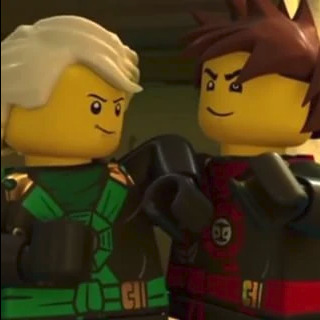
#red and green bracket#r&g round 3#red and green poll#mario#mario and luigi#luigi#super Mario#super mario bros#kai and Lloyd#ninjago#ninjago kai#ninjago lloyd#kai#lloyd#rgb siblings
2K notes
·
View notes
Text
Damn some people here are disrespectful.
Vote whatever you want, but the whole "who tf are those random anime girls lmao" attitude is so silly. Imagine being a fujoshi and disregarding a massively influential fandom with 45 years of history standing on the shoulders of your fujoshi predecessors, which was admitted by the creators themselves. Kids these days.
Anyway, accept this installation as my contribution to the ongoing Tumblr revolution, as it's too entertaining not to participate
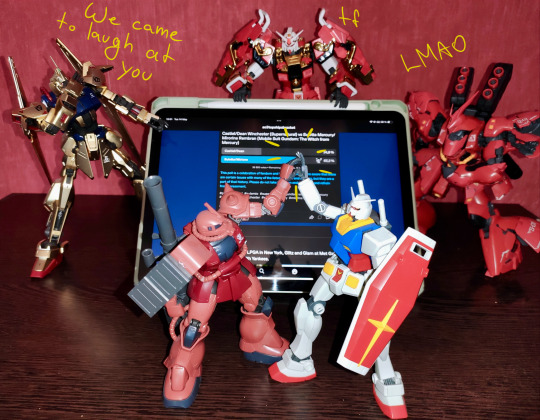
And if you're curious why these space lesbians are so powerful, I invite you to YouTube where the entirety of G-Witch can be watched for free in multiple languages. Don't worry, it's a standalone series that doesn't require any prior knowledge of the Gundam franchise.
#sulemio#shipping bracket#gundam#witch from mercury#gunpla#hyaku shiki#sazabi#shin musha gundam#zaku II#rx-78-2#g-witch#gund 📈#tumblr top ships bracket
55 notes
·
View notes
Text
Bigender Swag Battle: Redemption Round 6 (Match 2)

#bigender swag battle#randomized redemption battle royale#rrbr round 6#cybersix#adrian seidelman#juno steel#the penumbra podcast#ena#ena joel g#polls#tumblr bracket
28 notes
·
View notes
Text
The Ultimate Character Design Tournament
Please remember to vote for characters solely based on design!
Ballister Boldheart | Nimona

ƎNA | ENA

#ultimate character design tournament#poll bracket#tumblr polls#tumblr tournament#bracket tournament#tumblr bracket#ballister boldheart#nimona#ƎNA#ena#ena joel g#character design
39 notes
·
View notes
Text

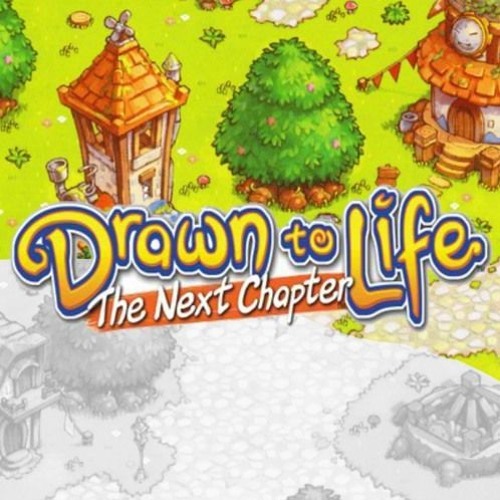
#cuphead#drawn to life#i made a typo in the drawn to life image's filename so i thought i lost the image for a sec LMFAO#round 1#bracket g#soundtrack showdown
549 notes
·
View notes
Text
Battle of the Gingers Bracket G Round 2

Alanna of Trebond (Tortall series by Tamora Pierce) vs ZombieCleo (MCYT)
#battle of the gingers#botg bracket g#battle of the gingers round 2#alanna of trebond#tortall series#tamora pierce#zombiecleo#mcyt#hermitcraft#tournament poll
171 notes
·
View notes
Text
As the end of January and therefore our first month of the new year rapidly approaches, there is surely only one thought on everyone's mind
With 2024 in full swing, how are we supposed to know what letter is THE letter of the year???
In 2023, our champion, the letter X was crowned letter of the year, but it is 2023 no longer which means... 🥁🥁🥁
It's time for a BRAND NEW alphabet bracket!
This year I'll be seeding the brackets AND taking suggestions for the six additional characters to be thrown into the bracket rather than using a random generator to determine letter placement
In order to determine seeding, I need YOUR help to currently figure out what the general popularity of each letter is, so please fill out the form below! Additionally, there's a spot to suggest which six non letters are added to the bracket this year (as I'm sticking with the easy 32 bracket layout and there's only 26 letters so we need 6 more contestants)
The form will remain open until sometime in mid to late February when I remember this blog exists again and organize the results to give you the lineup!
The first round will begin March 1st and will last one week, so ready your propaganda, and prepare yourselves to determine the 2024 letter of the year!
#not a poll#alphabet bracket#letter fight#bracket#a#b#c#d#e#f#g#h#i#j#k#l#m#n#o#p#q#r#s#t#u#v#w#x#y#z
56 notes
·
View notes
Text


Spamton propaganda
Elmo propaganda
#puppet bracket#puppet poll#spamton g spamton#deltarune spamton#deltarune#sesame street elmo#sesame street#elmo sesame street#original poll
170 notes
·
View notes
Text
Hey. Mckraken dump + misc doodles part 50. Throws these at you


Starting w these two! The human design belongs to @analog-smiles and I love it sm btw. Might draw it again in the future i say menacingly. The one on the left is me trying to get the hang of coloring him on digital +drawing full body!!!




I drew this guy more upset than usual yesterday because it wouldn't be your favorite character without inflicting pain on them 💕😋



And then these ones!! Expect more hino art soon because MAN. I love that awful ceo <33
Thats all for now!! Ty for looking at my stuff btw (-u•)~☆
#I love love love yokai watch!! Could you tell?#Time to draw the same guy 300 times!!#Also. Slightly messy corner of my desk reveal? Fun!#yokai watch#yo kai watch#Hinozall#Chairman mckraken#Dr Maddiman#I'm tryna get the hang of drawing him actuslly....ough....#K'mon-k'mon#Alternatively#Kmon kmon#Wow. I am so Sane and Normal it's too painful to look at#Must go work on another hino wip in my ibis paint x....#●posts from yomakai#□ yolo watch 2!#I don't think there is a single non 'Yolo watch 2!' Tagged art post on my account#I am unwell#In 100s of ways. Like i am constantly inspirit4d by babbl<>g for one#(Weird brackets to keep out of main tags#) forgot the other one and editing is hell on mobile!! So here you gosies#ACK SPESKING OF BEING INSPIRITED BY THE COOLEST GUY EVER. IM YAPPING AGAIN.#Ooo after I finish my other stuff in my wips I'll make more babbl<>g stuff.....maybe for ask blog! ☆☆
22 notes
·
View notes
Text


Canon Sapphic Characters Tournament Final Round (Bracket 3)
#anne bonny#clara paget#black sails#hg wells#helena g. wells#helena g wells#jaime murray#warehouse 13#tumblr tournament#tumblr bracket#tumblr poll#sapphic#wlw#lesbian#bisexual#maxanne#max x anne#bering and wells#myka x hg#canon sapphic characters tournament
128 notes
·
View notes